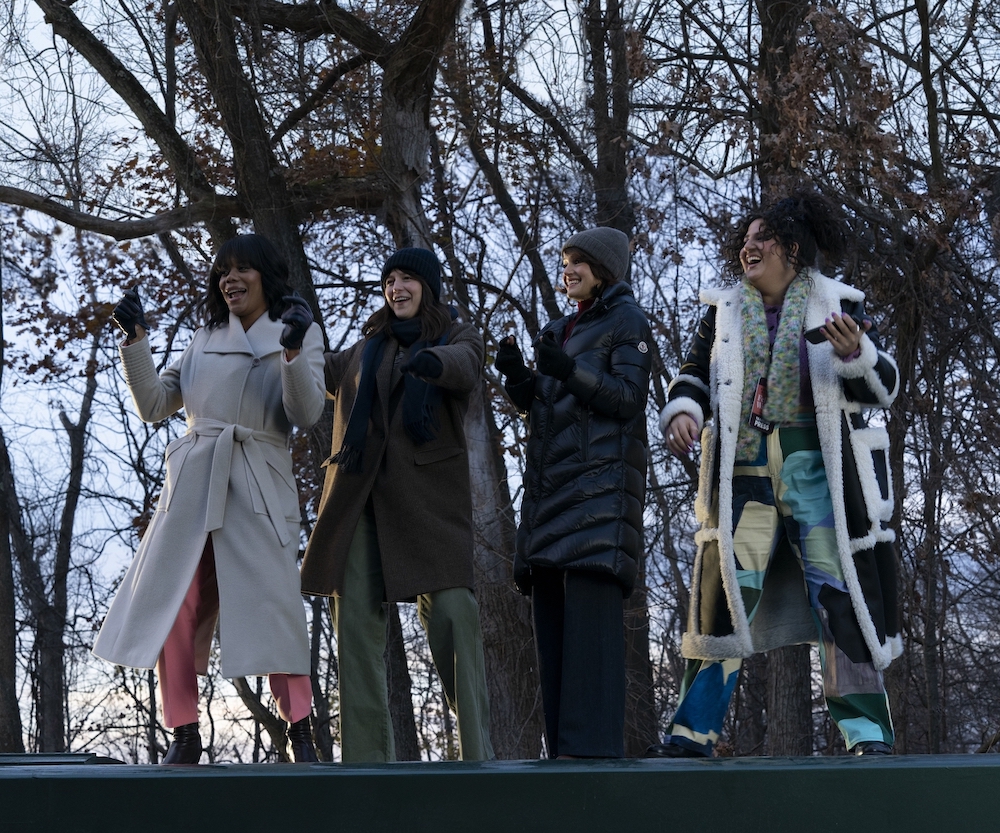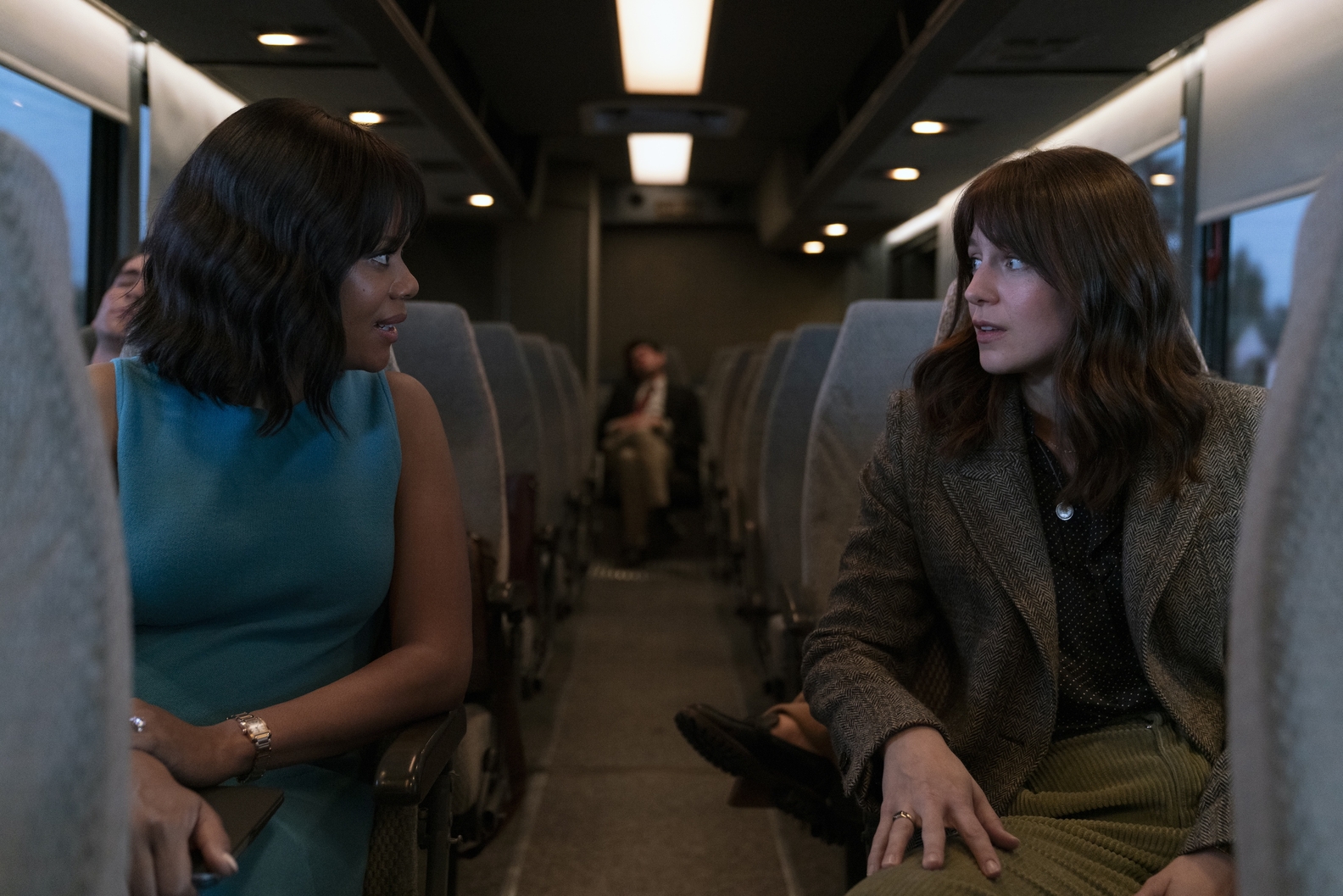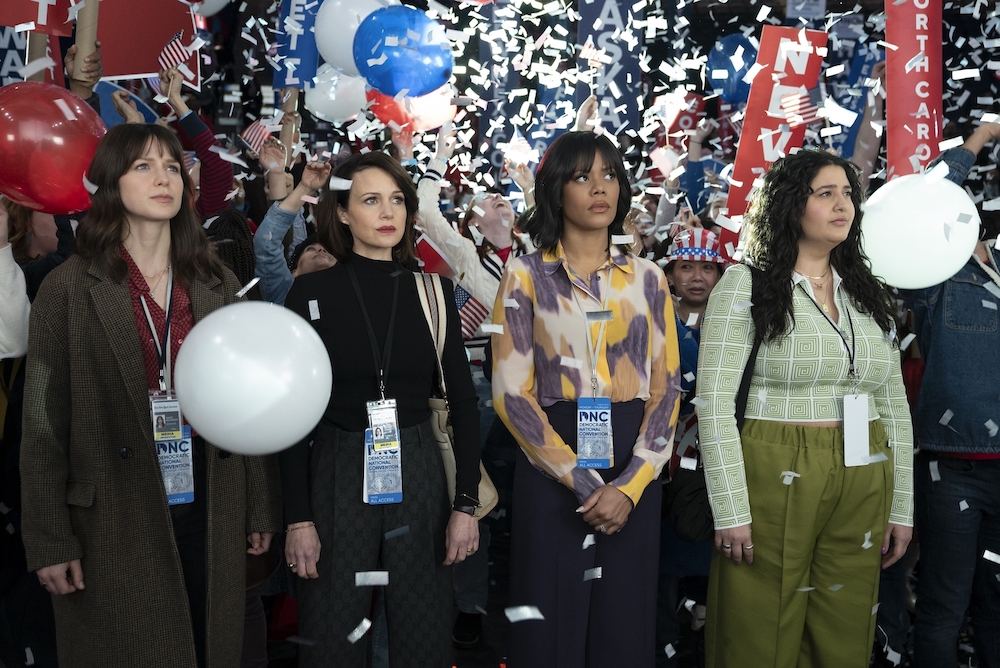In HBO Max’s ‘The Girls on the Bus,’ we follow the stories of four journalists who follow a Presidential candidate on her campaign while trying to get the biggest scoops that can make or break their careers. While it starts out as a competition where the four women are pitted against each other, they soon find common ground, realizing how all four of them have to fight preconceived notions as well as their past to prove their worth as journalists. With each episode, their stories become more personal, and their relationships with each other become more important than their rivalries. Considering how the show brings out a realistic picture of campaign journalism, the audience might have questions about the characters and if they are based on real people. SPOILERS AHEAD
Sadie, Kimberlyn, and Grace Represent Different Faces of Journalism

Created by Amy Chozick and Julie Plec, ‘The Girls on the Bus’ is loosely inspired by Chock’s novel ‘Chasing Hillary.’ The show resorts to fictional characters and situations, which have strokes of reality, to tell the story. The characters of Sadie McCarthy, Kimberlyn Kendrick, and Grace Keene are not specifically based on any real journalists. However, they are inspired by the fellow journalists Chozick met in her own journey during Hillary Clinton’s presidential campaign.
For the character of Sadie, the creators of the show borrowed elements from Chozick’s real life, as well as the women she’d known and worked with. They wanted to present a character who was still hopeful and romanticized old-school values of journalism, mainly as it would present a great contrast with the variety of other protagonists when they stood side by side.
When Chozick was approached to have her book adapted, she and the show’s creators knew that while the source material covered the 2016 campaign, they didn’t want to do a repetition of the same thing. That was history, and this is now, and they wanted to focus on things that would feel more relevant to the audience, especially when it comes to the conflicts surrounding political beliefs. They wanted to include conversations and discussions from different aspects and perspectives, which is why they needed to have characters who were not only diverse in their background but also in their political beliefs.
Having figured out the hopefulness of Sadie’s character, the creators turned towards someone her opposite, someone who has been in the field long enough to know not to be emotionally attached to her subjects. This led to the creation of Grace, who is the oldest of the group, which also puts her in contrast with the character of Lola, who is the youngest in the group. This made Grace the face of “old school” journalism, while Lola represented the new form of journalism, one that includes TikTok and social media, something that Grace struggles to come to terms with. It also opens the door for her to act as a mentor and a guiding light for the younger ones while also reflecting on all the ways journalism has changed since she started out.

While the characters of Sadie, Grace, and Lola present the liberal face of politics, with the characters being more Democratic-leaning, it was essential to bring in the perspective of the other side. This is where Kimberlyn comes in. The creators referred to Candace Owens, a conservative, and other journalists with the same thought process. Being a Black woman and a Republican, Kimberlyn brings a fresh perspective, balancing an otherwise Democrat-saturated group.
To bring this diversity of characters onto the screen, the actresses did their homework. To get into Sadie’s skin, actress Melissa Benoist read Chozick’s book, in addition to ‘What It Takes: The Way to the White House,’ ‘The Boys on the Bus’ (which her character is obsessed with), and ‘Fear and Loathing: On the Campaign Trail ’72,’ while also watching documentaries like ‘Journey with George.’ This material gave her enough sense of what journalism, especially for a campaign, looks like and what challenges it poses for a person.
With all this in mind, we can say that the protagonists in ‘The Girls on the Bus’ are fictional, though they have been created in the image of real people, especially women, who are tasked with reporting on important matters that can, often, change the course of history.
Read More: The Girls on the Bus: Where is the Max Show Filmed?


You must be logged in to post a comment.